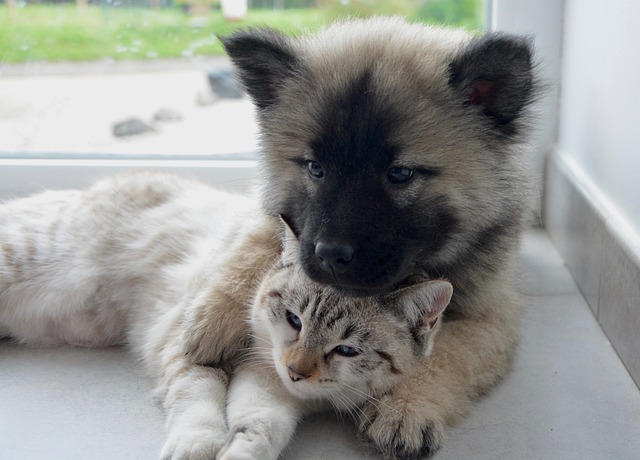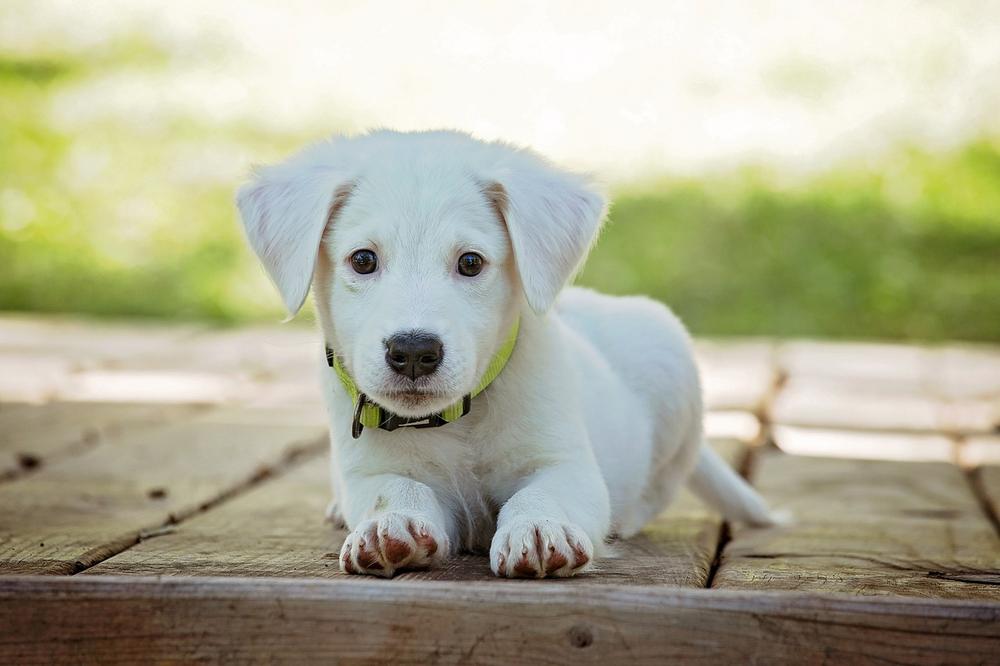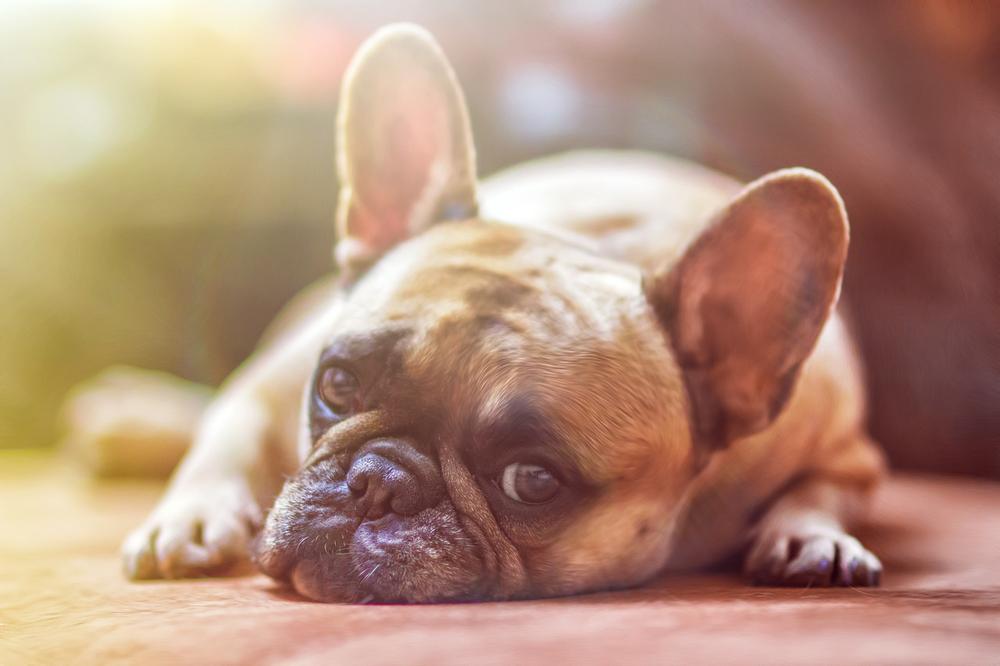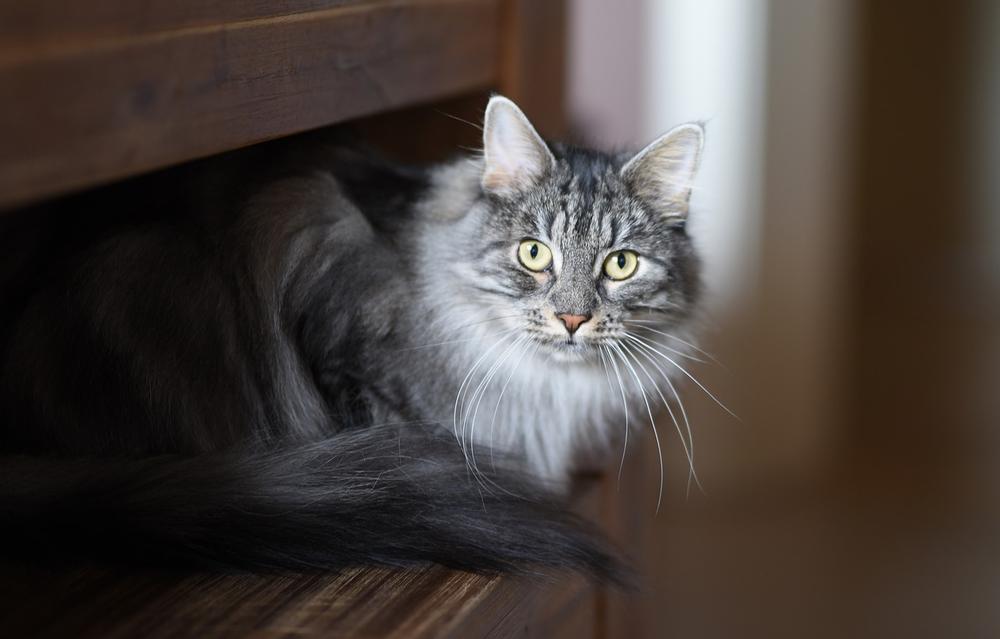Dog and Cat Mating: Wait, Is It ACTUALLY POSSIBLE?

So you want to know if dogs and cats can mate...
I hear you.
The thought of different species getting frisky can definitely make you scratch your head. 🤔
What would the offspring be like?
Would they bark or meow?
It's intriguing, I know.
But let's be real here.
You might also be feeling a little skeptical.
I mean, how could two totally different animals find common ground?
It's like trying to mix oil and water, right?
Well, in today's guide, I've got all the answers you're looking for.
I'll lay it all out so you can satisfy that curiosity.
And trust me, there are some surprises in store.
So, what are you waiting for?
Let's dive in and find out the truth about dog and cat mating.
Keep reading.
Can Dogs and Cats Have Offspring?
Dogs and cats cannot have offspring together due to differences in their gestation periods, breeding behaviors, and DNA. Their reproductive systems are incompatible, as they are different species.
Do you ever wonder if dogs and cats can mate and have babies together?
Well, let me tell you, it's not possible.
Let's break it down...
Dogs have a gestation period of around 63 days, while cats play a little longer with a range of 58 to 67 days. That's just one of the reasons why there are no dogcats running around!
But it's not only the difference in their pregnancy time that stops them from successfully mating.
Their behaviors when it comes to breeding, heat cycles, and even their DNA all come into play, making it a big fat no-no for these furry creatures.

You see, cats are more independent when it comes to mating.
They basically say, "I'll do it when I'm good and ready," whereas dogs walk around wagging their tails, eager for some action.
And get this...
Their reproductive systems might as well be speaking completely different languages.
They simply cannot work together to create offspring that would survive and thrive.
In simple terms, cats and dogs are different species, so even if they wanted to mate, it just isn't biologically possible.
Well, my friend, I hope you've learned something interesting about the biology of these catdog scenarios.
It's truly fascinating, isn't it?
Main points I'll expand upon further down this article:
- Dogs and cats have different numbers of chromosomes, preventing them from reproducing together.
- Cats and dogs have unique mating signals and behaviors that they cannot recognize in each other.
- Kittens and puppies can nurse from animals of another species, and mother dogs and cats willingly care for orphaned offspring.
- Dogs and cats belong to separate scientific classifications, Canidae and Felidae families.
- Mother dogs and cats have the natural instinct to care for rejected offspring, even if they belong to a different species.
- Dogs mounting cats doesn't necessarily indicate mating; it can be due to various factors.
- Cats and dogs can live together without issues, but certain foods should be avoided for each species.
- Dogs can mate with wolves, but cats cannot reproduce with dogs due to genetic differences.
- Male cats have barbed penises that can harm female dogs during mating.
- Dogs and cats are too genetically dissimilar to produce healthy hybrid offspring.
The Biology Behind Dog and Cat Mating
After successful mating, dogs have a natural reproductive instinct known as tying or knotting.
This ensures that the male's ejaculate remains within the female dog, increasing the chances of fertilization.

Now, here's an interesting fact about chromosomes:
Dogs have a whopping 78 chromosomes, while cats only have 38 chromosomes. That means it is impossible for these two furry creatures to reproduce with each other.
So, next time you see a dog and a cat together, remember, their genetic differences make them unable to create little mixed-species offspring.
Understanding the Differences Between Dog and Cat Reproduction
Dogs and cats have different reproductive cycles and behaviors. Dogs have heat cycles every 6-8 months, while cats have shorter and more frequent cycles. Dogs have more prominent reproductive organs, and cats have small, pointed structures exclusive to males. Kittens and puppies can suckle from other species, and dogs and cats belong to separate scientific classifications. Shedding patterns and dietary changes are factors to consider.
Understanding the Differences Between Reproduction in Dogs and Cats
When it comes to mating, dogs and cats have distinct variations that can be quite complex.
Dogs undergo heat cycles roughly every six to eight months - quite frequently.
On the other hand, cats experience shorter and more frequent heat cycles, typically occurring towards the end of each monthly period during the breeding season.
But hold on, there's even more!
Mating signals and behaviors exhibited by dogs and cats are completely different.
You won't witness a dog performing acrobatic maneuvers like a cat would.
Similarly, a cat wouldn't wag its tail with joy like our loyal canine companions.
And let's not forget about their reproductive organs.
Dogs possess more prominent and visible components compared to cats.
The small, pointed structures found in males belong exclusively to cats.
By the way, did you know that kittens and puppies can suckle from animals of another species?
Now that's truly remarkable.

The milk they receive contains vital nutrients.
In fact, mother dogs and cats willingly take in orphaned or abandoned offspring, raising them as their own.
It's a truly heartwarming sight to witness.
Now, here's something intriguing:
Dogs and cats belong to separate scientific classifications.
Dogs fall under the Canidae family, while cats are categorized within the Felidae family.
They truly do have unique family trees!
Oh, one final point.
Shedding patterns and dietary changes. These factors tend to arise when discussing breeds similar to Chow Chows.
Just thought I'd throw that nugget of information your way.
Well, that should provide a clear understanding of how reproduction differs between dogs and cats.
There is certainly plenty of distinctive factors at play here, wouldn't you agree?
And finally, if you find yourself particularly intrigued by the mysterious nature of our feline friends, I have something special for you.
Have you ever wondered what it means when a black cat comes to your house? In my blog post on the spiritual meaning and symbolism behind this curious visitation, I delve into the fascinating insights that can be gleaned from this encounter.
So, if you're curious to explore this aspect of the feline realm, I highly recommend checking out What Does It Mean When a Black Cat Comes to Your House.
The Challenges of Dog and Cat Mating
The challenges when dogs and cats mate
Let's talk about the difficulties that arise when dogs and cats decide to get together. Believe it or not, they face quite a few hurdles in order to make things work.
Male cats and their unique penises
Yes, you heard me right!
Male cats have these little barbs on their penises.
And what do these barbs do?
Well, they serve the purpose of mechanically stimulating ovulation in female cats.
It may sound strange, but that's just nature doing its thing.
Now, here's where things can get complicated.
If a male cat tries to mate with a female dog, those barbs can potentially cause harm and injury. Ouch...
So if you have both a dog and cat at home, be vigilant during mating season to ensure everyone stays safe.
Motherly instincts crossing species boundaries
Now, let's dive into something heartwarming.

You see, both mother dogs and cats have this incredible natural instinct to care for rejected or abandoned offspring, even when they belong to a different species.
Isn't that amazing?
In some exceptional cases, mother dogs might accept and nurture kittens, and similarly, mother cats might take a liking to puppies.
Talk about love between different species...
However, you have to note that cats may struggle to produce enough milk to feed newborn puppies, so keep an eye on their feeding requirements.
So, while mating between dogs and cats can come with its fair share of challenges, it's also a reminder of the wonders and complexities of the animal kingdom.
But what about those rare instances where dogs and cats do engage in some kind of mating behavior?
Well, let's debunk some misconceptions and delve into the reasons behind this puzzling behavior.
You won't believe the factors that can contribute to dogs mounting cats. Plus, I have some surprising food recommendations for both species:
Common Misconceptions About Dog and Cat Mating
Dog and cat mating is often misunderstood, but the truth is quite different.
Let me break it down for you.
While the idea of large dogs mating with small cats might captivate your curiosity, it's highly unlikely. The differences in chromosome numbers and reproductive behaviors present a significant challenge to successful mating between these two species.
But here's the thing: just because dogs mount cats doesn't necessarily mean they're trying to mate.
In fact, there could be other reasons behind this fascinating behavior.
Dogs may mount cats due to stress, excitement, dominance, or even playfulness.
And it doesn't end there...
If you want your furry feline and canine friends to coexist harmoniously, there are a few things you should keep in mind.
First off, let's clarify that strawberries are perfectly safe for both dogs and cats in moderation. However, tomato soup is a big no-no for dogs, and Oreos should never make their way into a cat's stomach.
On a positive note, giving protein powder to dogs in moderation CAN actually benefit their all in all health.
So, before jumping to conclusions, remember that understanding the complexities of dog and cat interactions can alleviate any unnecessary worry.
The Potential Dangers of Dog and Cat Mating
Attempting mating between dogs and cats can be dangerous for both animals involved. Here are some potential dangers to consider:
- Injuries: Due to their size discrepancies, interspecies aggression, or the barbed penises of male cats, injuries can occur during mating attempts. These injuries can be harmful to female dogs.
- Harmful consequences: Dogs and cats cannot produce offspring together due to their different DNA. While dogs can mate with wolves, cats cannot do the same with dogs. It is important to understand that there will not be any hybrid species resulting from dog-cat mating.
- Unsuitable partners: The physical compatibility between dogs and cats is limited. Their reproductive systems are designed differently, making mating between these species difficult and potentially harmful.
- Risk to health: Mating-related injuries can lead to infections and other health problems if left untreated. It is crucial to prioritize the safety and well-being of both your dog and cat by preventing mating attempts.
You should give proper attention and care to your pets' reproductive health.
Ensure you provide a safe environment and consult with a veterinarian if you have concerns about dog and cat mating. 😕
Are Dog-Cat Hybrids Possible?
| Dog-Cat Hybrid Factors | Description |
|---|---|
| Gestation Period | Dogs and cats have different gestation periods, with dogs typically having a longer gestation period than cats. This difference in gestation periods would make successful crossbreeding between the two species unlikely. |
| Chromosome Number | Dogs have 39 pairs of chromosomes, while cats have 19 pairs. The dissimilarity in chromosome number poses a challenge for genetic compatibility and successful hybridization. |
| Genetic Compatibility | Dogs and cats have significantly different genetic makeup, making it difficult for their DNA to combine in a way that produces viable offspring. The genetic dissimilarities result in various reproductive and developmental barriers. |
| Reproductive Behavior | Dogs and cats have distinct mating behaviors and social structures. Their different mating rituals and preferences make it unlikely for them to naturally mate and produce offspring. |
| Size and Anatomy | Dogs and cats have different body sizes, anatomical structures, and reproductive organs. These physical differences can also contribute to the incompatibility and hinder the possibility of successful hybridization. |
| Hybrid Health Risks | Even if a dog and cat were somehow able to produce offspring, the resulting hybrids would likely face significant health risks due to the genetic incompatibility between the species. These health risks could include developmental abnormalities, compromised immune systems, and reduced fertility. |
Are dog-cat hybrids possible?
Well, here's the deal.
Unlike certain animal species with similar DNA, such as ligers (lion and tiger hybrid), dogs and cats don't make good breeding partners. You see, their genetics are just too different, preventing them from producing healthy hybrid offspring.
Dogs belong to the Canidae family, while cats are part of the Felidae family. Although they may share some similarities in appearance and behavior, their genetic makeup is distinctive.

Ligers and tigons, for example, result from lions and tigers mating because they have compatible chromosomes and similar enough DNA.
But when it comes to dogs and cats, their genes aren't quite compatible enough to create viable hybrids.
So, in a nutshell, dogs and cats exhibit genetic dissimilarities that prevent successful crossbreeding. While you might have wondered if a doctal or catdog could be a reality, unfortunately, it's not.
However, even though dog-and-cat hybrids aren't possible, that doesn't change the fact that both species can make great pets!
So, if you're looking for a furry companion, consider adopting either a dog or a cat, because they're pawsome on their own.
And that wraps up today's article.
Before you leave, can I ask you something? Did my blog post help you out? If it did, it would mean a lot to me if you shared it with your friends and family. Just click on any of the social media sharing icons for an instant share. Thank you so much!
Talk soon,
-Sarah Davis